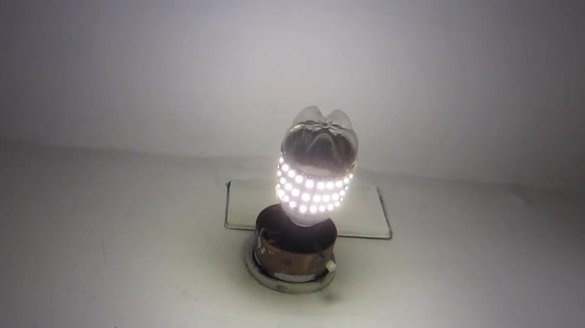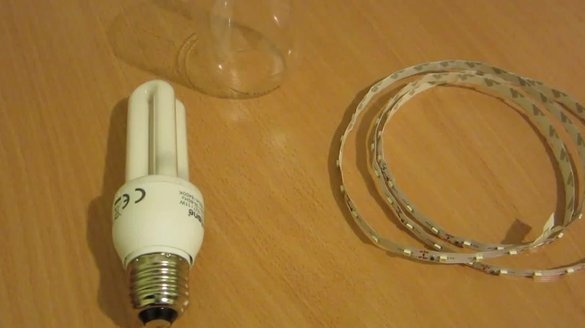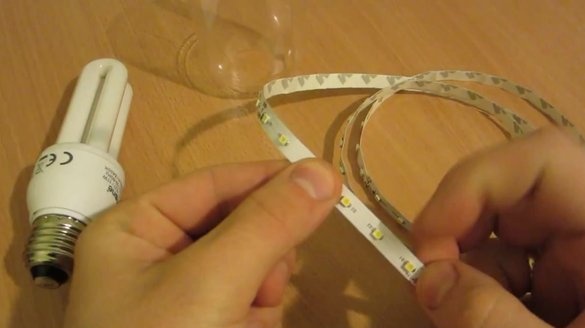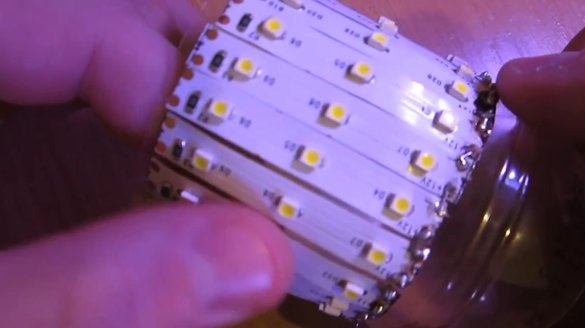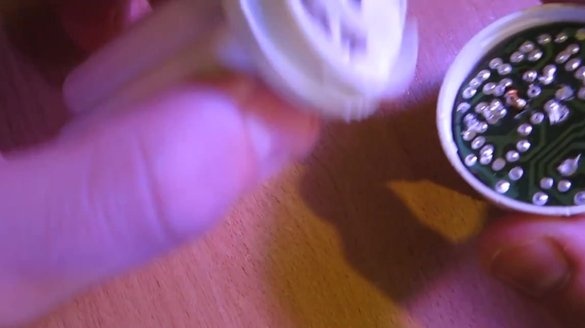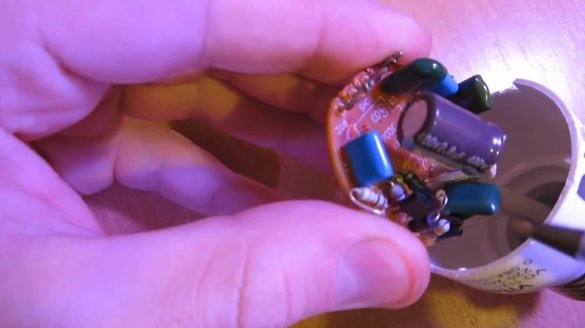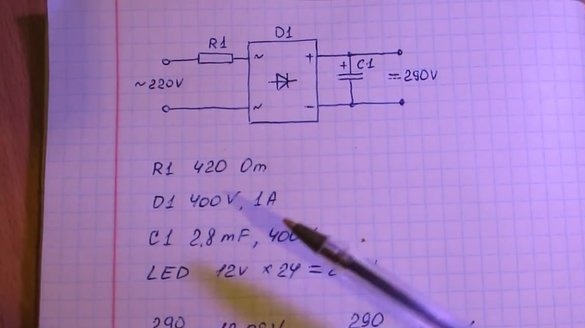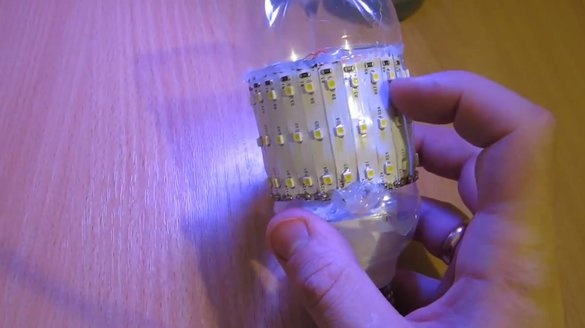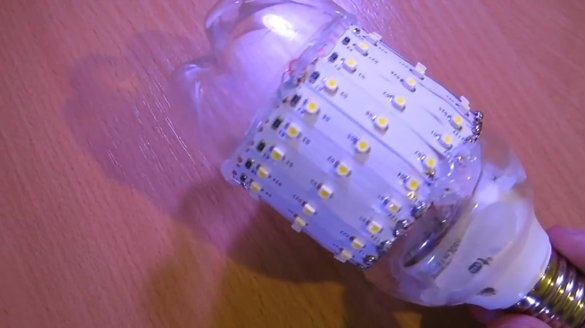LED bulbs are very popular today. The growing popularity of these bulbs every day is related to the fact that they allow you to save considerable money on electricity costs. Such bulbs are sold in almost all stores, but you can make such bulbs in home conditions, which we will try to do right now.
To start, let's watch the video:
[media = http: //www.youtube.com/watch? v = ISalGPhtjtQ]
We will need:
- The burned-out economical bulb;
- LED Strip Light;
- A plastic bottle for the bulb housing.
To get started, take our LED strip and cut it into 24 parts. The tape used by the author homemade, has segments with three LEDs in each. Three LEDs of each individual piece light up when 12 volts are supplied. With a serial connection of 24 pieces, we get 220 volts, which is equal to the voltage of an ordinary bulb. The process of cutting the LED strip is not of any difficulty, since there are special places for cuts on the tape. After all the pieces are ready, you need to cut a small part from the bottle and stick all the pieces of tape around the perimeter.
After that, we need to solder all the partitions to connect the pieces of the LED strip in series.
Next, we disassemble the burned-out economical bulb. The upper part, that is, the bulb itself, we do not need. It is mounted on the board in the lower part with four contacts that must be carefully soldered so as not to damage the board.
The board itself consists of 220 volt wires entering it, diodes, a rectifier diode and a capacitor. It is the capacitor that should serve as the power source for our LEDs. To do this, you just need to find the capacitor contacts to solder the wires coming from the LEDs to them. The negative and positive contacts of the capacitor are indicated on the board.
It should be noted that the author of the video brings a separate scheme in which the participating elements are displayed. The circuit is shown in the photo below.
Well, the hard part of the job is left behind.Now we just have to solder the wires coming from the LED strip to the contacts of the capacitor, preserving the polarity, and also glue a piece of plastic bottle on which pieces of the LED strip are glued to the bottom of the economical bulb.
This light bulb can be safely used in small rooms, such as a bathroom or toilet.

